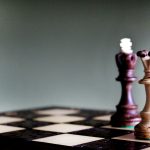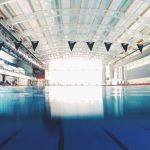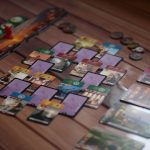Download links
How to install Mastering Parkour: The Taya777 Approach APK?
1. Tap the downloaded Mastering Parkour: The Taya777 Approach APK file.
2. Touch install.
3. Follow the steps on the screen.
Description
Parkour, often described as the art of movement, has its roots in the late 20th century, emerging from the streets of France. Its origins can be traced back to the training methods of military obstacle course training, particularly the parcours du combattant, which was designed to enhance soldiers’ agility and speed. David Belle, one of the founding figures of parkour, was heavily influenced by his father, who was a firefighter and taught him the importance of physical fitness and overcoming obstacles.
Belle, along with his friends, began to develop a unique style of movement that emphasized fluidity, efficiency, and creativity. This approach to navigating urban environments quickly gained traction, leading to the establishment of parkour as a distinct discipline. The philosophy behind parkour extends beyond mere physical prowess; it embodies a mindset that encourages individuals to confront challenges head-on.
Practitioners, known as traceurs (male) or traceuses (female), view obstacles not as barriers but as opportunities for growth and self-expression. This perspective fosters resilience and adaptability, qualities that are essential not only in parkour but also in everyday life. The community surrounding parkour emphasizes respect for one’s environment and fellow practitioners, promoting a culture of support and encouragement.
This ethos is encapsulated in the phrase “be strong to be useful,” which highlights the importance of using one’s abilities to help others and contribute positively to society.
Key Takeaways
- Parkour originated in France in the 1980s as a training discipline using movement developed from military obstacle course training.
- The philosophy of parkour emphasizes self-improvement, overcoming obstacles, and efficient movement through the environment.
- Fundamental parkour training includes mastering basic movements such as running, jumping, climbing, and balancing.
- The Taya777 approach to mastering parkour focuses on developing strength, agility, and mental focus through a combination of physical and mental training techniques.
- Advanced techniques and progressions in parkour include complex movements such as precision jumps, wall runs, and flips, requiring a high level of skill and control.
The Fundamentals of Parkour Training
Building a Strong Foundation
Developing a well-rounded fitness base is crucial for practitioners, as each movement demands a unique blend of physical abilities. For example, running is not just about speed, but also proper technique to maximize efficiency and minimize the risk of injury. Practitioners often practice sprinting drills on various terrains to enhance their adaptability to different surfaces.
Mastering Key Techniques
Jumping is another critical component of parkour training, requiring practitioners to accurately gauge distances and execute jumps with precision. Techniques like the precision jump, where one leaps from one surface to another with accuracy, are fundamental for navigating urban landscapes. Vaulting techniques, such as the speed vault or lazy vault, enable practitioners to overcome obstacles like railings or walls fluidly.
Progressing through Practice and Strength Training
Each of these movements demands dedicated practice and an understanding of body mechanics. As practitioners progress, they often incorporate strength training exercises like squats and core workouts to build the necessary muscle groups that support these movements.
The Taya777 Approach to Mastering Parkour

The Taya777 approach to mastering parkour emphasizes a holistic training methodology that integrates physical conditioning with mental fortitude. This method is named after a prominent figure in the parkour community who has developed a structured program aimed at helping practitioners of all levels enhance their skills. Central to this approach is the concept of progressive training, where individuals gradually increase the complexity and intensity of their workouts.
This ensures that they build a solid foundation before attempting more challenging maneuvers. Incorporating elements such as visualization techniques is also a hallmark of the Taya777 approach. Practitioners are encouraged to mentally rehearse movements before executing them physically.
This mental preparation can significantly enhance performance by reducing anxiety and improving focus during practice sessions. Additionally, the Taya777 method promotes community engagement through group training sessions and workshops. By fostering a supportive environment where individuals can share tips and experiences, practitioners are more likely to stay motivated and committed to their training journey.
Advanced Techniques and Progressions
| Technique/Progression | Description | Benefits |
|---|---|---|
| Weighted Calisthenics | Adding weights to bodyweight exercises | Increased strength and muscle mass |
| Plyometric Training | Explosive movements to develop power | Improved athletic performance |
| Isometric Holds | Static muscle contractions | Enhanced muscle endurance |
| Progressive Overload | Gradually increasing resistance | Continuous strength gains |
As practitioners become more proficient in parkour, they often seek to expand their repertoire with advanced techniques that challenge their skills and creativity. One such technique is the wall flip, which combines acrobatics with parkour principles. This maneuver requires a deep understanding of body control and spatial awareness, as traceurs must execute a backflip off a vertical surface while maintaining momentum.
Mastering this technique involves extensive practice on lower walls before progressing to higher surfaces.
This technique demands not only strength but also precise timing and coordination.
Practitioners often train this skill by starting with lower heights and gradually increasing the difficulty as they gain confidence. The progression from basic movements to advanced techniques illustrates the importance of patience and persistence in parkour training.
Injury Prevention and Recovery in Parkour
Injury prevention is a critical aspect of parkour training due to the high-impact nature of many movements involved in the discipline. Practitioners must prioritize proper warm-up routines that include dynamic stretching and mobility exercises to prepare their bodies for intense physical activity. Additionally, understanding one’s limits is essential; pushing beyond one’s capabilities can lead to injuries such as sprains or fractures.
Traceurs are encouraged to listen to their bodies and take rest days when needed to allow for recovery. Recovery strategies play an equally important role in maintaining long-term health in parkour practitioners. Techniques such as foam rolling and massage therapy can help alleviate muscle soreness and improve flexibility.
Furthermore, incorporating low-impact activities like swimming or cycling into one’s routine can provide cardiovascular benefits without placing excessive strain on joints. Nutrition also plays a vital role in recovery; consuming a balanced diet rich in protein, vitamins, and minerals supports muscle repair and overall well-being.
Applying Parkour Skills to Real-Life Situations

The skills developed through parkour training extend far beyond the confines of urban landscapes; they can be applied in various real-life situations that require quick thinking and adaptability.
The mental resilience cultivated through parkour also translates into everyday challenges, enabling individuals to approach problems with confidence and creativity.
Moreover, parkour encourages a heightened awareness of one’s surroundings. Practitioners learn to assess environments quickly, identifying potential hazards or opportunities for movement. This situational awareness can enhance safety in various contexts, from navigating crowded spaces to participating in outdoor adventures like hiking or climbing.
Ultimately, the principles of parkour—adaptability, creativity, and resilience—can empower individuals to tackle life’s challenges with a proactive mindset, transforming obstacles into opportunities for growth and exploration.
If you’re interested in exploring different ways to test your skills and agility, you may want to check out an article on Taya777’s website titled “Unleash Your Gaming Skills with Taya777 Online Gaming.” This article discusses how online gaming can help improve your reflexes and decision-making abilities, much like how parkour challenges your physical abilities. You can read more about it here.
FAQs
What is parkour?
Parkour is a physical discipline that involves moving through an environment in a creative and efficient way. It often includes running, jumping, climbing, and other movements to overcome obstacles.
Where did parkour originate?
Parkour originated in France in the 1980s, developed by David Belle and his group of friends. It was influenced by military obstacle course training and various martial arts.
What are the benefits of practicing parkour?
Practicing parkour can improve strength, agility, balance, and coordination. It also promotes problem-solving skills and mental focus.
Is parkour dangerous?
Like any physical activity, parkour can be dangerous if not practiced with proper technique and safety precautions. It is important to receive proper training and start with the basics before attempting more advanced movements.
Can anyone do parkour?
Parkour can be practiced by people of all ages and fitness levels, but it is important to start with proper training and progress at a pace that is comfortable for the individual.
Are there specific clothing or gear for parkour?
While there is no specific clothing or gear required for parkour, it is recommended to wear comfortable and flexible clothing that allows for freedom of movement. Some practitioners may choose to wear specialized parkour shoes for better grip and support.





